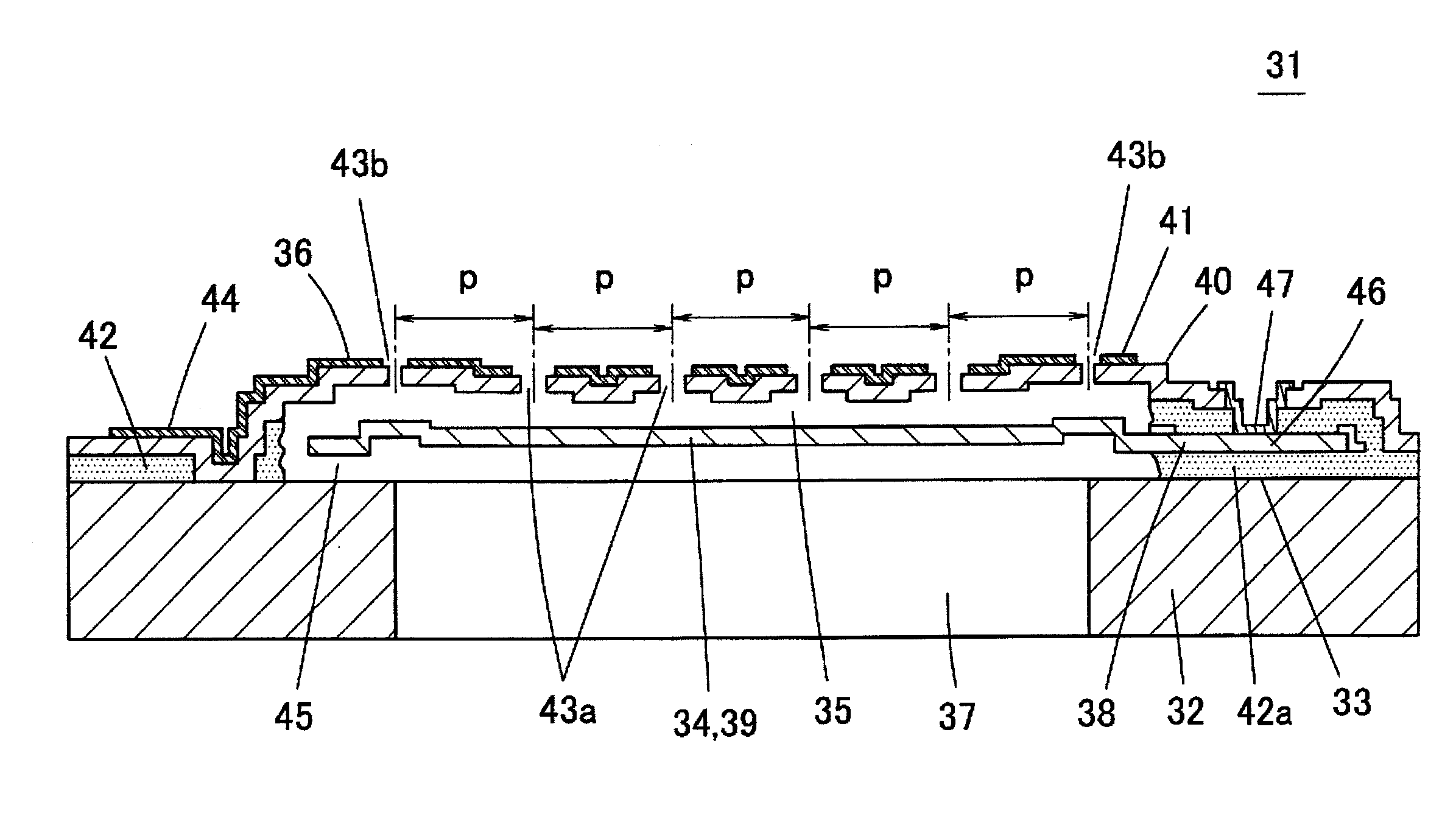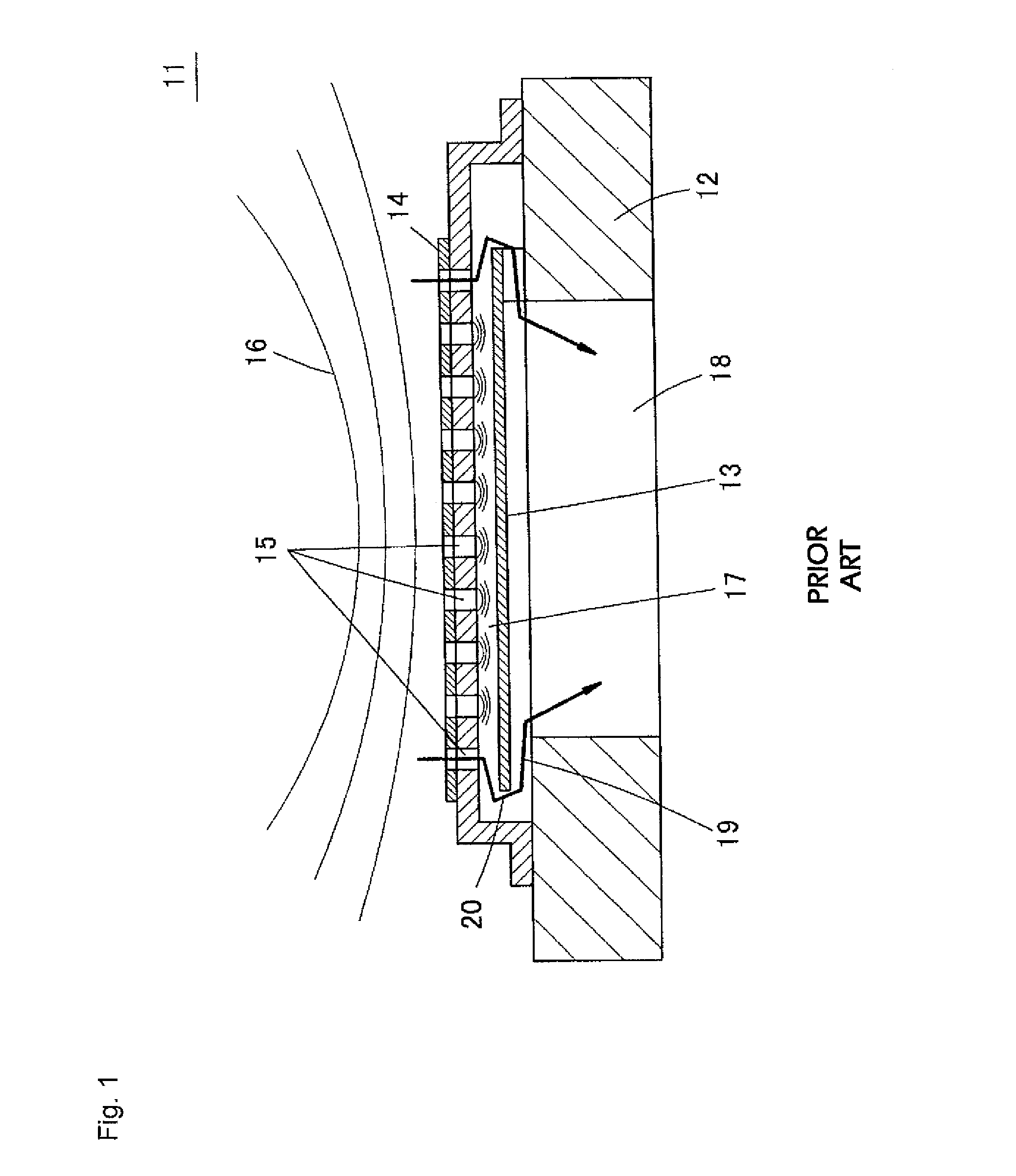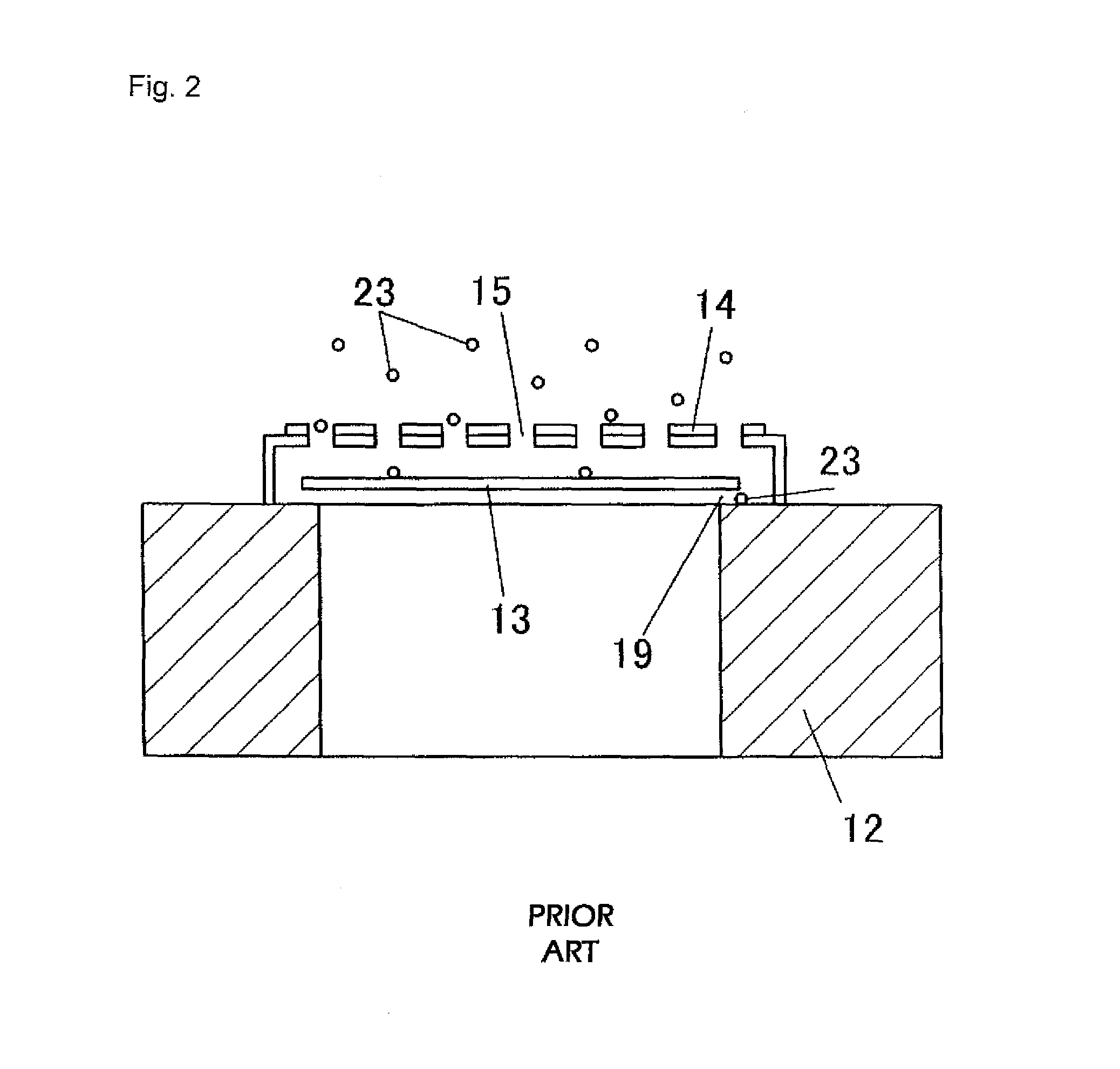Electrostatic capacitive vibrating sensor
a capacitive vibration and capacitive technology, applied in the direction of instruments, fluid tightness measurement, specific gravity measurement, etc., can solve the problems of clogging of the vent hole, and reducing etc., to achieve the effect of reducing the acoustic resistance of the ventilation pathway passing through the vent hole, reducing the dust-proof property, and reducing the noise resistan
- Summary
- Abstract
- Description
- Claims
- Application Information
AI Technical Summary
Benefits of technology
Problems solved by technology
Method used
Image
Examples
first embodiment
[0093](First Embodiment)
[0094]A first embodiment of the invention will be described with reference to FIGS. 6 to 12. FIG. 6 is a schematic sectional view illustrating an electrostatic capacitive vibration sensor 31 of the first embodiment, the right half of FIG. 6 illustrates a section passing through a fixed portion of a vibrating electrode plate, and the left half illustrates a section passing between the fixed portions. FIG. 7 is an exploded perspective view of the vibration sensor 31, FIG. 8 is a plan view of the vibration sensor 31, and FIG. 9 is a plan view illustrating a state in which the fixed electrode plate in an upper surface of the vibration sensor 31 is removed.
[0095]The vibration sensor 31 is an electrostatic capacitive sensor, in which a vibrating electrode plate 34 is provided in an upper surface of a silicon substrate 32 with an insulating coating 33 interposed therebetween, and a fixed electrode plate 36 is provided on the vibrating electrode plate 34 with a micro...
second embodiment
[0133](Second Embodiment)
[0134]FIG. 16 is a plan view illustrating a vibration sensor 51 according to a second embodiment of the invention. FIG. 17 is a plan view of a state in which a fixed electrode film of the vibration sensor 51 is removed. In the vibration sensor 51, a portion above the through-hole 37 of the silicon substrate 32 is covered with the vibrating electrode plate 34, and the outer peripheral portion of the vibrating electrode plate 34 is partially fixed to the upper surface of the silicon substrate 32. In the vibrating electrode plate 34, a region (fixed portion 38) fixed to the upper surface of the silicon substrate 32 by the retaining portion 42a formed by the sacrifice layer 42 of the upper surface of the silicon substrate 32 is expressed by a hatched line in FIG. 17. Plural slits 52 are opened in positions near the outer peripheral portion inside the outer peripheral portion fixed to the silicon substrate 32. The outer peripheral portion of the vibrating electro...
third embodiment
[0138](Third Embodiment)
[0139]FIG. 18(a) is a plan view illustrating a vibration sensor 61 according to a third embodiment of the invention, and FIG. 18(b) is a schematic sectional view of the vibration sensor 61. In the first and second embodiments, the vibrating electrode plate 34 and the fixed electrode plate 36 are formed in order on the silicon substrate 32. As illustrated in FIG. 18, the fixed electrode plate 36 and the vibrating electrode plate 34 may be formed in order on the silicon substrate 32. Because other structures are similar to those of the first embodiment, the description is omitted. In the third embodiment, the acoustic vibration propagating from the through-hole 37 of the silicon substrate 32 propagates to the vibrating electrode plate 34 through the acoustic holes 43a and 43b, and the vibrating electrode plate 34 is vibrated by the acoustic vibration.
PUM
 Login to View More
Login to View More Abstract
Description
Claims
Application Information
 Login to View More
Login to View More - R&D
- Intellectual Property
- Life Sciences
- Materials
- Tech Scout
- Unparalleled Data Quality
- Higher Quality Content
- 60% Fewer Hallucinations
Browse by: Latest US Patents, China's latest patents, Technical Efficacy Thesaurus, Application Domain, Technology Topic, Popular Technical Reports.
© 2025 PatSnap. All rights reserved.Legal|Privacy policy|Modern Slavery Act Transparency Statement|Sitemap|About US| Contact US: help@patsnap.com



